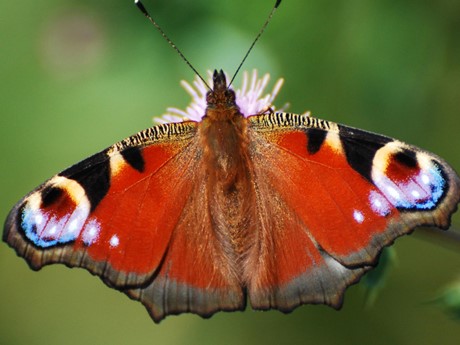British Science Week - take part in Nature's Calendar
Judith Garforth and Alex Marshall, 04/01/2024
We’re partnering with British Science Week to get the UK looking out for seasonal events this spring.
If you have arrived here from British Science Week, welcome! Thank you for your interest in Nature’s Calendar.


Recording for Nature's Calendar (Judith Garforth)
Tune in with Liz Bonnin.
Hear from wildlife presenter Liz Bonnin and the Nature’s Calendar team about how our seasons are changing over time, the importance of the “spring index” calculation and how you can take part in recording for Nature’s Calendar.
To take part in Nature's Calendar, first set up an account
- Register here. You must be 18+ to register an account
- Verify your email address by clicking on the link in the email we send. If for any reason your verification email does not arrive, please send us an email so that we can help: naturescalendar@woodlandtrust.org.uk
- Sign in and complete your registration. When asked 'Where did you hear about Nature's Calendar', please select 'British Science Week' from the drop down list.

Swallow (John Bridges/WTML)

Horse chestnut (Rosanna Ballentine/WTML)

Orange-tip (John Bridges/WTML)

Hawthorn (John Bridges/WTML)
Next, choose some recording locations to monitor this spring.
Explore your local area and find somewhere nearby that you can monitor one or more of the following species this spring:
- Horse chestnut
- Hawthorn
- Swallow
- Orange-tip butterfly
If you need some help identifying tree species try our free tree ID App.
Choose locations that you visit regularly, ideally as part of your normal routine.
For example, you might choose to monitor:
- A horse chestnut tree in your local park
- The hawthorn tree you pass on the way to work or school
- Birds and insects in your garden or that you see whilst walking your dog
It’s important to choose locations that you visit regularly (at least once or twice a week) so that you notice the first time (give or take a few days) that seasonal events happen to the species you're monitoring this spring.
Each recording location is the area of a circle with a 20-metre radius.
Then, get recording
Visit your chosen locations at least once a week this spring and note down the date that you see the following events for the very first time.
Take a photo too if you can (this is optional).
First hawthorn flower
Record hawthorn first flowering when the petals of the first individual flower open sufficiently for you to see inside the flower.
Expected date range: early April to late May
What to look for:

JUST RIGHT (Kylie Harrison Mellor/WTML)

TOO EARLY (Kylie Harrison Mellor/WTML)

TOO LATE (Kylie Harrison Mellor/WTML)
First horse chestnut flower
Horse chestnut flowers grow in clusters. Record first flowering when the petals of the first individual flower in the cluster are open sufficiently for you to see inside the flower.
Expected date range: mid April to mid May
What to look for:

JUST RIGHT (Judith Garforth/WTML)

TOO LATE (Rosanna Ballentine/WTML)
First swallow
Swallows are migratory birds. They are summer visitors to the UK. Nature's Calendar monitors how early or late swallows arrive in the UK in spring.
Record the date that you first see a live, active swallow after their winter absence.
Expected date range: from April.
What to look for:

Adult swallow (Amy Lewis/WTML)

Silhouette in flight (Laurie Campbell/WTML)
First orange-tip
Record the first time you see a live, active orange tip outdoors.
This butterfly species overwinters as pupae and are first seen on the wing in April and May.
Expected date range: April - May
What to look for:

Male orange-tip (Katherine Jaiteh/WTML)

Female orange-tip (northeastwildlife.co.uk)

Underwing male orange-tip (WTML)
Finally, add your records to the Nature's Calendar website
Once you've spotted one of the four seasonal events above, add your records to the Nature's Calendar website.
If you'd like some help adding a record to the website watch our webinar.
You’ve added your record, what happens to it next?
Your record will appear instantly on our live maps allowing us to track the progress of spring in 2024.
It will also contribute to the calculation of the 2024 UK Spring Index.
The UK Spring Index is an indicator showing how changes in climate, particularly temperature, are associated with changes in the timing of biological events.
The index varies a lot from year-to-year, but illustrates that since 1998 spring has occurred around 8.7 days earlier than during the period 1891 to 1947.
Find out more about the UK Spring Index
Thank you for taking part in Nature's Calendar.
Your records will be even more valuable if you continue to monitor the same trees or wildlife year-on-year. The records that you submit will be used by scientists to monitor the effects of weather and climate on UK wildlife. We hope you will continue to be our eyes on the ground keeping track of how wildlife is responding to climate change in the UK!
If you've enjoyed taking part in the Nature's Calendar project this spring you can continue to record all year round. Have a look at our poster to choose other seasonal events to record this year.

